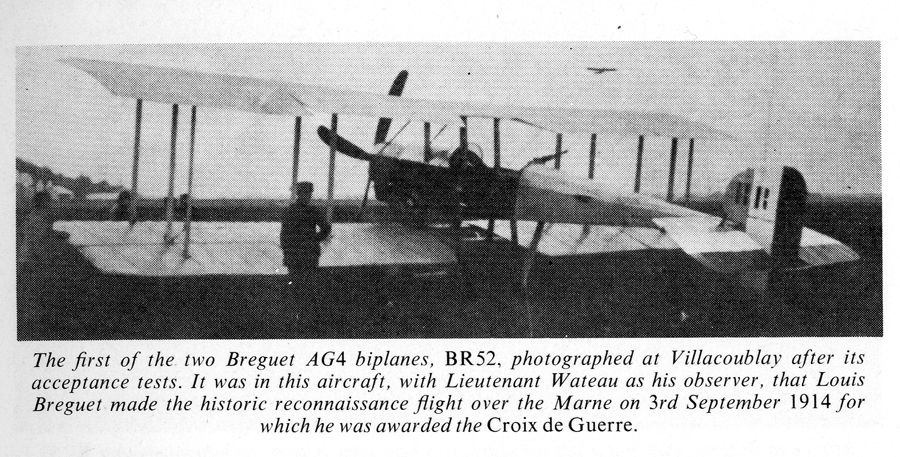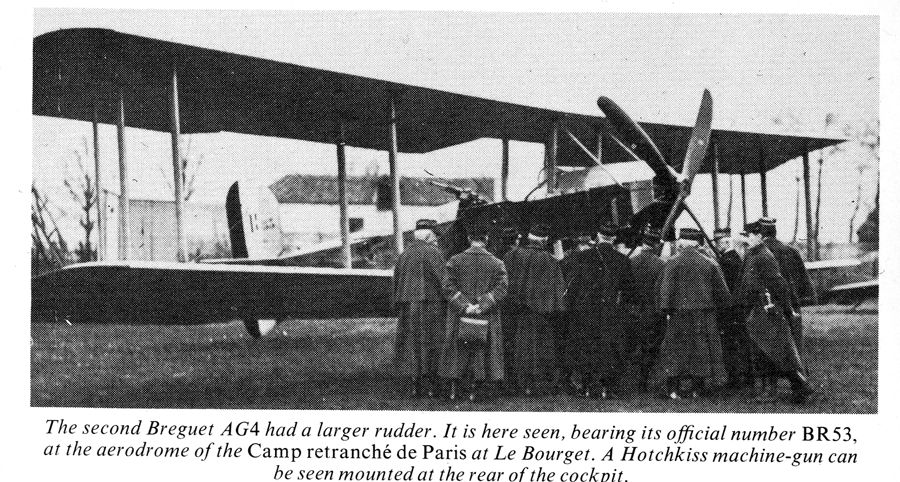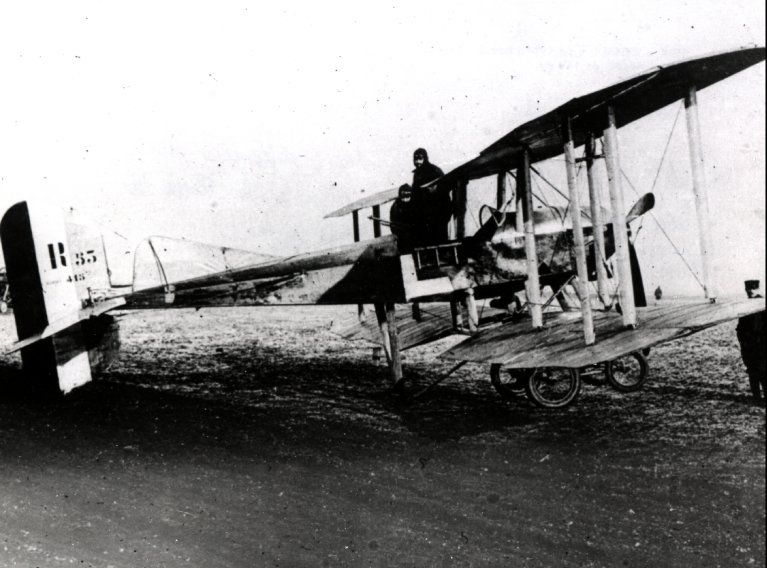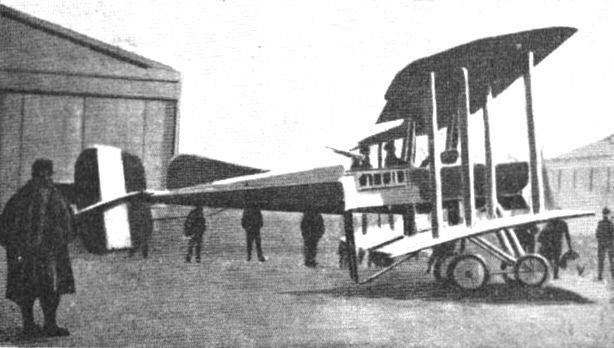I have wanted for some years to do a model of this particular aeroplane, and have only recently come upon sufficient information to take a decent run at it. It was a wretched flying machine, a dead-end developmentally, and had a very brief and limited service life, but it flew one of the most significant sorties ever flown by any aircraft.
M. Louis Breguet was working on two designs when the Great War broke out, one a tractor and one a pusher, both designed to meet a specification issued by the
Aviation Militaire in late 1913 for armored aeroplanes. The tractor, employing a high-power twin-row Gnome rotary, was designated AG.4, the pusher, employing a twin-row Canton-Unne radial, was designated BU.3. One example of the tractor had been completed by early August, components for another, and for the pusher, were in hand but not yet completed and assembled.
M. Breguet had realized during 1913 that his original tractor design pattern, with single spar wings employing warp-control, conical rear fuselage, and an all-flying, cruciform tail surface, had reached the end of its potential, and had begun designing a twin-spar wing structure which employed ailerons, which he fitted to a pair of racers that year, though these continued with the older fuselage and tail surfaces. The AG.4 incorporated this wing structure, with more conventional, though still all-flying, tail surfaces, and a new fuselage with a squared off structure topped with a standard turtle-back. The result, though able to carry a good weight aloft, like all Breguet designs, was a poor flyer, with poor directional stability, and further hampered by the flaws of the twin-row Gnome rotary, which was a lamentably un-reliable device, however useful it might be, when carefully cossetted and pampered, for bursts of speed at racing meets (or official trials).
As the German advance into France neared the Breguet factory at Douai, M. Breguet flew the completed AG.4 to Paris, placing it and himself at the disposal of Fortified Camp the city had been designated (the components of the other AG.4, and of the BU.3, made the same trip on trucks by road). The Gnome threw a rocker-arm during the flight, but now Cpl. Breguet was fortunate no structural damage was sustained, and managed to keep control of the machine.
On Sept. 2nd, Cpl. Breguet, with Lt. Watteau as observer, flew his AG.4 (it was still his property, not
Aviation Militaire equipment) on a long-range reconnaissance from Paris during which Lt. Watteau detected the first signs the German general von Kluck was turning his forces to pass to the east of Paris rather than to the west of it. This report, brought to Gen Gallieni in Paris, was the germ from which the great
riposte of the Marne sprang, which forced the German retreat and ensured the hostilities would be no decisive summer campaign but endure for years and set the shape of the whole ensuing century. Because of this the AG.4, however poor its qualities as a flying machine or a service machine, and however brief its use, is owed a very significant place in aviation history.
Shortly after this flight, the AG.4 was accepted by the
Aviation Militaire, and given the serial number BR52. It was equipped with a Hotchkiss machine gun in the observer's position, and sent to
Escadrille BR.17, equipped with earlier single-spar Breguet designs and operating in Alsace. While there its pilot, Lt. Moineau, a test pilot for Breguet in peace-time, fitted it with a triangular fin and a larger rudder, in an attempt to address its poor stability. It was not wholly successful, and the twin-row Gnome motor gave tremendous difficulties in the field. When the unit re-equipped with Voisins near the end of October, BR52 was abandoned.
The components of the second AG.4 were assembled in October at Paris, fitted with the same fin and an even larger rudder, and taken on by the
Aviation Militaire as BR53. Armed with a Hotchkiss machine-gun, it was flown on defensive patrols, with an eye towards engaging any German aeroplanes or Zeppelins flying towards Paris. In this role it received some news-paper coverage claiming it had engaged German Tauben and Aviatiks on several occasions, but this is probably untrue, however comforting it may have been to read in the city. After a series of forced landings, including one on the day after Christmas, 1914, BR53 was written off, sometime around the end of the year.
M. Breguet attempted to salvage the design by fitting a third air-frame with a twin-row Canton-Unne, and fairing out the fuselage to round section with light stringers, but without success. The single example, on trial with the French Navy, crashed on landing after a bombing raid in February of 1915. The Breguet concern was by then devoted to producing pusher bombers, derived from the BU.3, in company with
Michellin freres.
Here is pretty much the sum of the available material to guide this build:

This is the only photograph I have been able to find showing the AG.4 flown to Paris by M. Breguet in its original form (scanned from Warplanes of WWI, Fighters, vol. 4, by J.M. Bruce).
Here are two photographs of the second example, BR53 (the first scanned from the above source):


Here, for interest, is a newspaper photograph (probably of BR53) from the period, with some obvious retouching by the censor:

Here is a drawing in general circulation: it has some good points, but I do not trust it, and of course it shows the late tail assembly:

Here is a period drawing from 1914, of a 'Breguet 2 Seater Armoured Biplane': it is not wholly accurate either, but has many useful points, including stated dimensions:


Obviously, there will be a certain 'seat of the pants' quality to this build, but I expect I will be within spitting distance of the real thing when completed, at least....